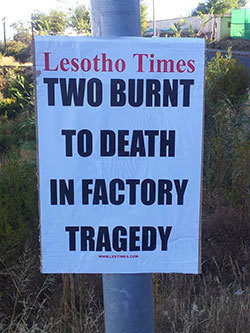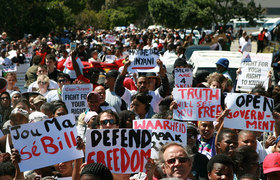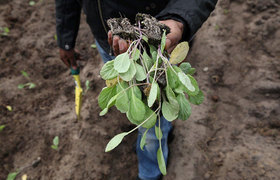Labour intensive
25 March 2015
Lesotho is sub-Saharan Africa's largest exporter of clothing to the United States, supplying retailers such as Gap, Levi Strauss, Timberland and Walmart. Clothing factories, which include South African-owned firms, constitute the largest employer in the mountain kingdom's formal sector.
Labour law specialist Shane Godfrey has been helping the country improve the compliance of clothing firms with labour standards.
The landlocked mountain kingdom faces numerous development challenges, says Godfrey of the Labour and Enterprise Policy Research Group in the Institute of Development and Labour Law. Godfrey and colleague Debbie Collier are involved in several projects there. Funded by the International Labour Organisation (ILO), a specialised agency of the United Nations, these seek to secure and enhance labour rights. The pair has travelled to Lesotho on a number of occasions to research labour conditions.
"The clothing sector relies heavily on preferential trading arrangements such as the African Growth and Opportunity Act (AGOA)," says Godfrey. AGOA is a non-reciprocal trade preference programme that provides duty-free treatment to US imports of certain products from eligible sub-Saharan African countries, such as Lesotho.
A number of these projects have been for Better Work Lesotho, a partnership of the ILO and the International Finance Corporation that aims to improve compliance with labour standards in the clothing sector in developing countries.
Better Work Lesotho conducts assessments of employer compliance with labour standards, provides training and capacity-building within the sector, and helps to forge joint worker and management consultative committees at clothing firms.
More recently, Collier has consulted on a labour law reform project to amend and consolidate the country's existing labour legislation.
Critical issues for the researchers include questions concerning the rights of vulnerable categories of workers, and the use of labour brokers in Lesotho; as well as mechanisms for strengthening collective bargaining structures.
Story by Helen Swingler
 This work is licensed under a Creative Commons Attribution-NoDerivatives 4.0 International License.
This work is licensed under a Creative Commons Attribution-NoDerivatives 4.0 International License.
Please view the republishing articles page for more information.










